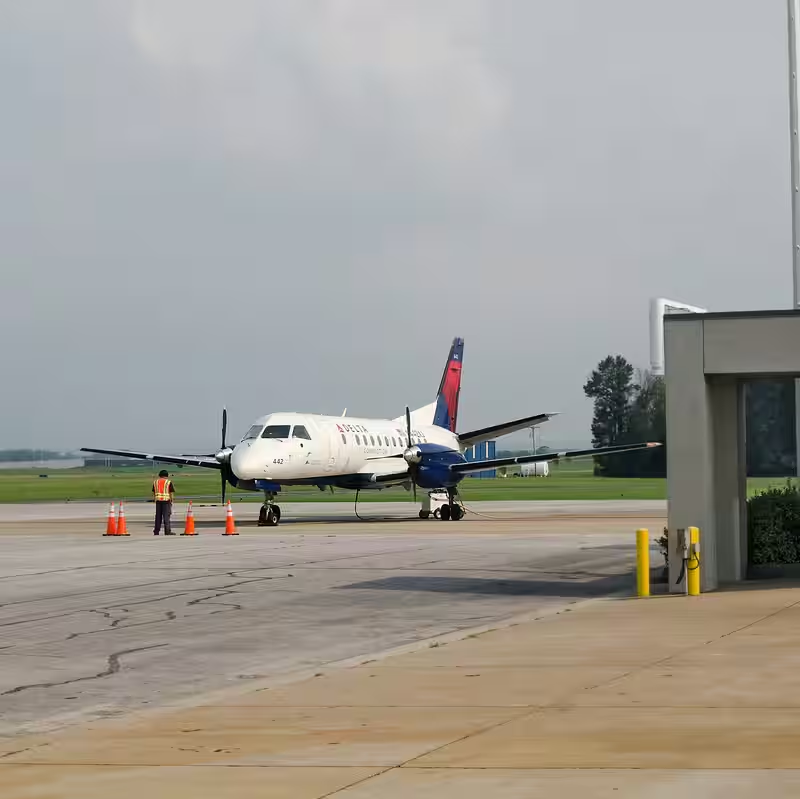Table of Contents
- How the Government Shutdown Is Hitting the Skies
- What Is the Essential Air Service—and Why Does It Matter?
- Air Traffic Controllers Working Without Pay—And Calling in Sick
- Flight Delays Begin in Denver and Newark
- 2019 Shutdown Offers a Warning
- What Travelers Need to Know Now
- Sources
How the Government Shutdown Is Hitting the Skies
The ripple effects of the ongoing federal government shutdown are now reaching America’s airports. On Monday, October 6, 2025, Transportation Secretary Sean Duffy issued a stark warning: unless Congress acts fast, U.S. air travel will face real disruptions by Sunday.
Two critical systems are at risk: the Essential Air Service (EAS), which keeps small communities connected by air, and the nation’s air traffic control network, already strained as unpaid controllers begin calling in sick.
What Is the Essential Air Service—and Why Does It Matter?
Established in 1978 after airline deregulation, the Essential Air Service provides federal subsidies to commercial airlines to maintain scheduled flights to rural and remote airports that wouldn’t otherwise be profitable.
Today, the program supports 175 communities across the U.S.—including 65 in Alaska alone. Without EAS funding, many of these towns could lose all commercial air service overnight.
“There’s many small communities across the country that will now no longer have the resources to make sure they have air service,” Secretary Duffy said. “Every state across the country will be impacted.”
For residents in places like Presque Isle, Maine; Muscle Shoals, Alabama; or Kodiak, Alaska, EAS isn’t a luxury—it’s a lifeline for medical care, business, and emergency response.
Air Traffic Controllers Working Without Pay—And Calling in Sick
While EAS funding runs dry on Sunday, another crisis is unfolding in real time: air traffic controllers are working without pay and starting to call in sick.
Though legally required to report for duty during shutdowns, these highly trained professionals are facing mounting financial stress. “Now what they’re thinking about as they’re controlling our airspace is, how am I going to pay my mortgage, how am I going to make my car payment,” Duffy explained.
The National Air Traffic Controllers Association (NATCA) has urged members not to walk off the job—calling such actions “illegal” and career-ending—but absenteeism is rising nonetheless.
Flight Delays Begin in Denver and Newark
The strain is already showing. On Monday afternoon:
- Denver International Airport reported ground delays of ~40 minutes due to staffing shortages.
- Newark Liberty International Airport saw delays approaching 60 minutes.
The FAA has not released exact numbers on controller absences, but officials confirm the shortages are directly tied to the shutdown. If trends continue, the agency may be forced to reduce airspace capacity to maintain safety—a move that would trigger widespread delays and cancellations.
2019 Shutdown Offers a Warning
This isn’t the first time air travel forced a shutdown resolution. During the 35-day 2019 impasse, a similar wave of sick calls among controllers led to massive flight disruptions—ultimately pressuring President Trump and Congress to reopen the government.
History may repeat itself. “If we think there’s issues in the airspace, we will shut it down,” Duffy warned. “We will close it down, we will delay.”
What Travelers Need to Know Now
If you’re flying this week:
- Monitor your flight status closely, especially if departing from or connecting through smaller airports.
- Allow extra time at major hubs like Denver, Newark, Chicago, or Atlanta.
- Avoid non-essential travel to rural communities after Sunday—EAS routes may be suspended with little notice.
- Check with your airline about rebooking policies in case of cancellations.
While the FAA insists the national airspace remains safe, the margin for error is shrinking. As one controller anonymously told The Times: “We’re human. And right now, we’re stretched thin.”




